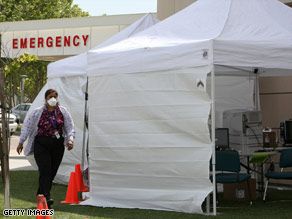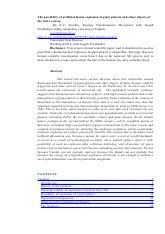May 3, 2009
Swine Flu Update: are we entering an Age of Pandemics?
Posted by Amara Angelica in categories: biological, biotech/medical, existential risks, futurism, geopolitics, nanotechnology, space, sustainability
May 2: Many U.S. emergency rooms and hospitals crammed with people… ”Walking well” flood hospitals… Clinics double their traffic in major cities … ER rooms turn away EMT cases. — CNN
Update May 4: Confirmed cases of H1N1 virus now at 985 in 20 countries (Mexico: 590, 25 deaths) — WHO. In U.S.: 245 confirmed U.S. cases in 35 states. — CDC.
“We might be entering an Age of Pandemics… a broad array of dangerous emerging 21st-century diseases, man-made or natural, brand-new or old, newly resistant to our current vaccines and antiviral drugs…. Martin Rees bet $1,000 that bioterror or bioerror would unleash a catastrophic event claiming one million lives in the next two decades…. Why? Less forest, more contact with animals… more meat eating (Africans last year consumed nearly 700 million wild animals… numbers of chickens raised for food in China have increased 1,000-fold over the past few decades)… farmers cut down jungle, creating deforested areas that once served as barriers to the zoonotic viruses…” — Larry Brilliant, Wall Street Journal

 I wrote an essay on the theme of the possibility of artificial initiation and fusion explosion of giants planets and other objects of Solar system. It is not a scientific article, but an atempt to collect all nesessary information about this existential risk. I conclude that it could not be ruled out as technical possibility, and could be made later as act of space war, which could clean entire Solar system.
I wrote an essay on the theme of the possibility of artificial initiation and fusion explosion of giants planets and other objects of Solar system. It is not a scientific article, but an atempt to collect all nesessary information about this existential risk. I conclude that it could not be ruled out as technical possibility, and could be made later as act of space war, which could clean entire Solar system.








